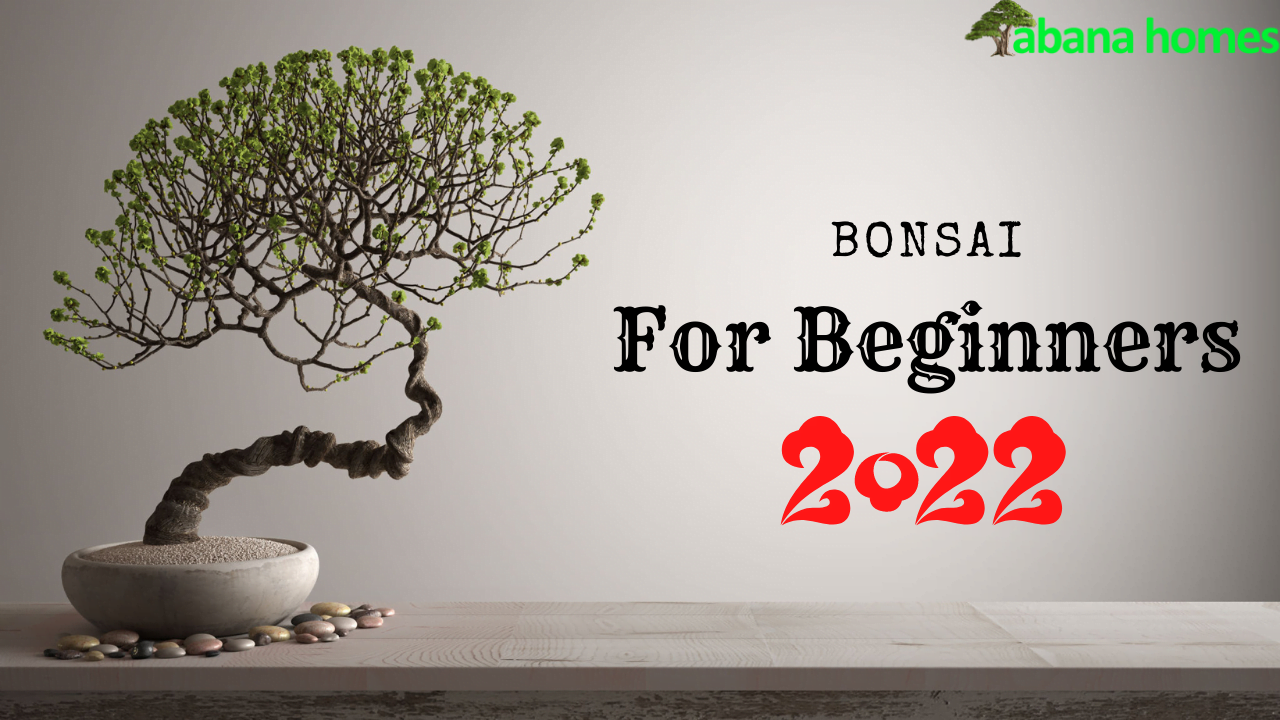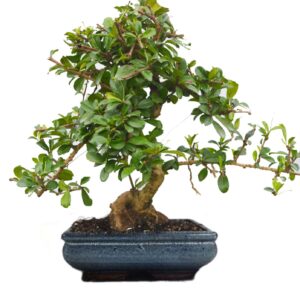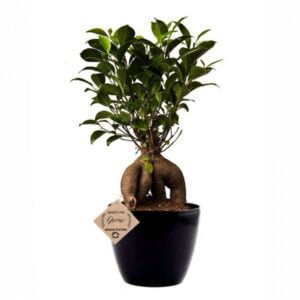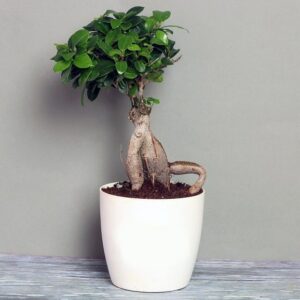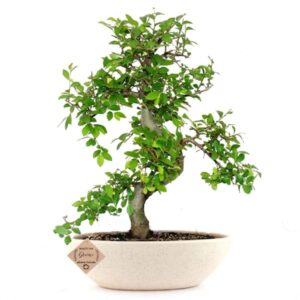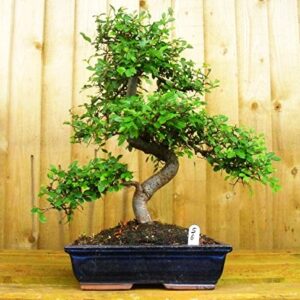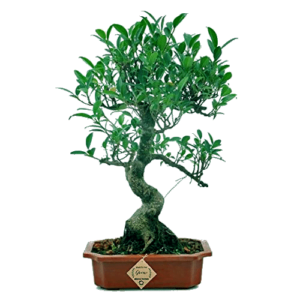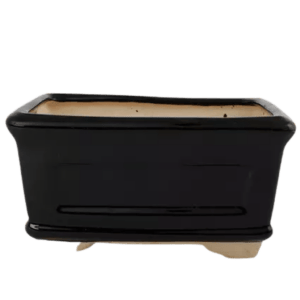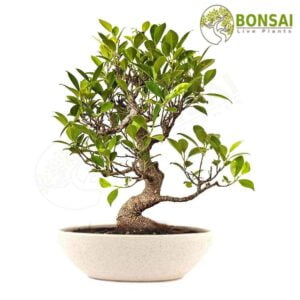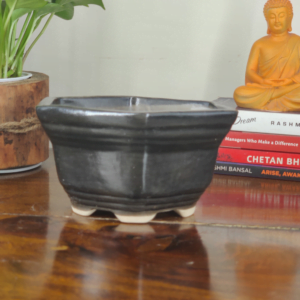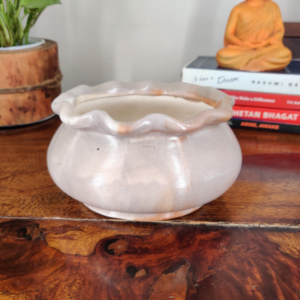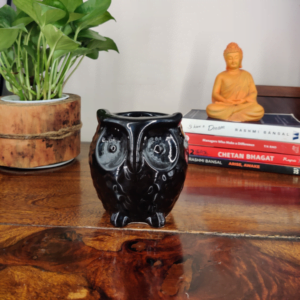Are you a beginner?
It’s likely that you have a lot of questions about bonsai.
No worries! Because this article is going to answer every question you have about the bonsai plant that any beginner would ask.
So, let’s dive deep into the world of bonsai,
Plant
As you move forward with the bonsai journey, you will learn about the types of plants that are used for growing bonsai, how to choose the appropriate plants, and which bonsai plants are best suited for you.
Buying bonsai planters online can be a great way to find the perfect container for your bonsai tree. Look for ones that are the right size and shape for your tree, and consider the material and style to complement your decor. With so many options available, you’re sure to find the perfect bonsai planter to showcase your tree.
Types of Plant Overview
I have divided the type of plant into Broadleaf evergreens, deciduous, and conifers to make it easier to understand.
With that said, let us learn more in detail about these types of plants,
Broadleaf Evergreen
This plant never loses all its leaves at a single time, which means they produce leaves year-round.
Of course, they do shed their leaves but gradually throughout the year.
For this category, I have listed the 29 best plants.
29 Bonsai Plants For Beginners
- Ficus
- Carmona
- Snow rose
- Boxwood
- Olive
- Sweet plum
- Citrus or lemon
- Fuchsia
- Japanese holly
- Premna
- Myrtle
- Firethorn
- Wattle
- Eucalypt
- Hibiscus
- Dwarf jade
- Money tree
- Cotoneaster
- Brush Cherry
- Azalea
- Bougainvillea
- Privet
- Hawaiian umbrella
- Brazilian raintree
- Jasmine
- Crepe myrtle
- Water jasmine
- Camellia
- Bamboo
Deciduous
This type of plant sheds leaves in the fall or dry season. In this category, we are having 26 plants
- Japanese Maple
- Pomegranate
- Apple and Crabapple
- Adenium
- Oak
- Rose
- Wisteria
- Star magnolia
- Ginkgo
- Flame tree
- Weeping willow
- Chinese quince
- Hawthorn
- Silk tree
- Liquidambar
- Chinese elm
- Japanese elm
- Japanese winterberry
- Cherry
- Jacaranda
- Trident maple
- Hornbeam and beech
- Chinese pepper
- Hackberry
- Baobab
- Birch
- Judas
- Jabuticaba
- Ash
- Dogwood
Conifer
Conifer plants are having a needle or scale-like foliage. If you are amused by the needle structure, check below 12 amazing conifer plants
- Juniper
- Pine
- Cedar
- Buddhist pine
- Yew
- Redwoods
- Hemlock
- Spruce
- Hinoki cypress
- Japanese cedar
- Bald cypress
- Larch and Golden Larch
- Thuja
- Fir
-
Bonsai Plants, Carmona Bonsai Plants, Flowering Bonsai Plants, Indoor Bonsai Tree
MRP: Original price was: ₹5,500.00.₹3,899.00Current price is: ₹3,899.00. -
Bonsai Plants, Indoor Bonsai Tree
MRP: Original price was: ₹1,500.00.₹1,099.00Current price is: ₹1,099.00. -
Indoor Bonsai Tree, Bonsai Plants, Ficus Bonsai Plants
MRP: Original price was: ₹1,100.00.₹799.00Current price is: ₹799.00. -
Bonsai Plants, Chinese Elm Bonsai, Outdoor Bonsai Tree, Outdoor Plants
MRP: Original price was: ₹3,600.00.₹2,599.00Current price is: ₹2,599.00. -
Bonsai Plants, Chinese Elm Bonsai, Exotic Bonsai Plants & Trees, Outdoor Bonsai Tree, Outdoor Plants
MRP: Original price was: ₹4,300.00.₹3,099.00Current price is: ₹3,099.00. -
Bonsai Plants, Chinese Elm Bonsai
MRP: Original price was: ₹4,100.00.₹2,899.00Current price is: ₹2,899.00. -
Bonsai Plants, Ficus Bonsai Plants
MRP: Original price was: ₹1,700.00.₹1,099.00Current price is: ₹1,099.00.
How to select the bonsai plant
It is understandable, you must be wondering how to determine which plant is right for you after seeing so many varieties.
No doubt, bonsai plants are having appealing looks, but apart from their aesthetic value choose the plant which satisfies their environmental needs also.
You can use the following points to choose the right bonsai for you.
1. Size
One of the main things you need to consider while selecting a bonsai tree is where you are going to place it.
This is important because the bonsai plant comes in lots of different sizes. Therefore, you need to choose the one that will grow to the right size for the space you are putting it in.
For example, you can select small bonsai trees such as little jade. On other hand, if you are having enough place, you can select plants such as Ulmus to fill your space.
2. Specific Plant Condition
Each bonsai plant differs in its care guidance and has conditions. For example, the majority of indoor bonsai plant needs lots of light and protection from frost.
When it comes to selecting bonsai plants, there are a few conditions where bonsai plants excel and are the best for those environments.
Few examples,
| Position with lots of sunlight | Jade bonsai tree, Chinese sweet plum |
| Warm room temperature | Carmona microphylla |
| Needs sun in the morning and the evening | Ulmus Parviflora |
| Well-lit position but out of direct sunlight | Ficus Retusa |
| Regular watering is not essential | Jade bonsai tree |
3. Grower’s Expertise
Some bonsai trees are challenging to grow whereas some are easy to care of. But as you are a beginner, varieties such as Ficus retusa, Schefflera arboricola, and Chinese juniper bonsai are the best to start with.
They can easily adapt to the range of climates and don’t need strict care to survive.
In contrast, if you want to grow a more advanced Bonsai tree, the Thousand Stars is a gorgeous tree to grow.
4. Buying a Healthy Plant
Bonsai plant can be grown through seed also, but at a beginner stage, it is best to purchase a bonsai healthy plant.
But what are the characteristics of a healthy plant?
In response to the above question, consider these factors when buying a bonsai plant.
- Branches: Healthy bonsai plants should not have cross branches. Moreover, the distribution of branches should not be throughout the shape of the tree.
- Leaves: In leaves, they should be healthy and bright green in color. The leaves should not be dried out or look off-colour.
- Roots: You should see the roots sticking out of the soil, but anchored into the pot strongly.
- Trunk: The trunk should be thicker at the bottom than the top. And the surface should be smooth.
Which Bonsai Plants to select
Are you confused?
When you are a beginner, it is obvious to get confused when selecting the correct bonsai for your needs.
That’s why I have listed the best bonsai tree for beginners along with their specifications, it would be easy for you to choose the right one.
1. Juniper
| Light | Bright, sunny light |
| Water | Allow soil to dry slightly before watering |
| Color | Needles can be yellow, pale green, or dark green. |
Juniper belongs to the coniferous category. It is a large genus of over 50 evergreen coniferous trees and shrubs that are popular bonsai trees. Besides, all the species of juniper can be grown as bonsai successfully.
They are popular for two reasons,
- The small foliage fits nicely with the miniature aesthetic of bonsai.
- Also, they are hardy trees that can withstand heavy pruning.
But juniper tree does not do well when grown inside and dry soil is their essential requirement.
2. Ginseng Ficus
| Light | Bright and indirect light |
| Water | Keep soil moist |
| Color | Glassy green foliage and light brown bark |
It is an excellent bonsai plant for beginners because it is a very hardy and forgiving plant. It is a broadleaf evergreen tree and has unique-looking aerial roots and oval-shaped dark green leaves.
Ginseng Ficus is well known for low-maintenance, as it does not require as much sunlight as other bonsai plants. Also, it grows well indoors, making it a perfect houseplant for you.
Also, it thrives well in warm climates and bright, indirect light.
3. Ficus Benjamina (Weeping fig)
| Light | Partial sun |
| Water | Frequent watering |
| color | Glossy green leaves |
The plant is famous for its umbrella-like canopy. Another unique feature is its twisted surface roots that lend well to bonsai styling.
Besides its unique feature, Ficus Benjamina is a hardy and resilient tree. Thus, making it a perfect bonsai plant for beginners. Also, it adapts well to growing indoors, and often it is grown as a houseplant.
4. Dwarf jade
| Light | Direct light |
| Water | Water sparsely |
| Color | Dark green succulent leaves, light brown branches. |
It is a preferable bonsai choice for beginners because of its softwood semi-evergreen shrubs. Dwarf jade look similar to the common jade variety. But the smaller foliage of dwarf jade makes it an excellent bonsai tree for beginners.
They grow well indoors but need direct sunlight for most of the day. Also, they can be successfully grown outside but cannot tolerate freezing temperatures.
5. Pomegranate
| Light | Bright direct light |
| Water | Regular watering |
| Color variety | Glossy green leaves with orange-red edible fruits. |
Pomegranate trees have become popular bonsai trees due to their thick, knotted bark and striking, fruit-bearing flowers.
This tree’s naturally gnarled appearance is ideal for the bonsai aesthetic.
Pomegranate bonsai can be grown outside year-round in warm temperatures also it can be grown indoors for part of the year. But they should be protected from freezing temperatures and frost.
6. Japanese Maple
| Light | Sunny, Partial sun |
| Water | Requires frequent watering |
| Color variety | Red or yellow leaves from spring to fall, while some varieties turn red in spring, green in summer then transforms into red, yellow, or orange in fall. |
Japanese maple is a deciduous tree they are popular for red-burgundy or green leaves that turn bright red, orange, or yellow in fall.
Young Japanese maple is having green or reddish bark which turns grey or grayish-brown as it ages.
If you are one of those who don’t have a lot of time to devote to bonsai should know that Japanese maples require a lot of water, especially during the growing season.
It may be necessary to water them daily, or even several times a day, depending on the temperature.
7. Carmona Retusa
| Light | Bright sunny light |
| Water | Regular |
| Color variety | Small dark-green leaves, small white flowers. |
It makes a great small indoor bonsai plant. Carmona Retusa has small dark-green shiny leaves that have tiny white dots on them. Also, small white flowers bloom all year round and produce tiny red berries.
It is an indoor bonsai but can be kept outside all year round but in warm climates. While growing it inside make sure it is placed in a bright sunny position in the house.
8. Banyan (Ficus benghalensis)
| Light | Bright sunlight |
| Water | Regular |
| Color variety | Long green leaves, greenish-yellow fruit |
Ficus benghalensis is the largest tree species. It releases aerial roots and once these roots reach the ground they grow into the woody trunk.
The amazing feature of the tree is that it looks naturally old.
The banyan tree loves a warm humid climate. If you live in a cold climate, you can grow it but make sure to care more in winter. Also, place the plant in a spot where it can receive all day long sun but shade in the afternoon.
9. Adenium
| Light | Sunny, partial sun |
| Water | Regular |
| Color variety | pink, white, red, or black trumpet-shaped flowers with thick, glossy leaves and a bulbous base. |
Adenium trees are ideal bonsai trees for beginners because of their bulbous trunk, rich blooms, and glossy foliage.
It’s the kind of tree that produces natural-looking bonsai, fast-growing and with little effort.
As it is a fast-growing tree and has the ability to grow well in small containers, you don’t have to worry about keeping it as a bonsai.
Bonsai Pot
Many containers can be used as pots for Bonsai trees if certain requirements are met.
Naturally, there must be drainage holes and wiring holes to allow the tree to be fixed to the pot.
Various materials can be used to make them, including ceramic, concrete, plastic, and metal (metals may release toxins). One can also make their own pots.
The classic Bonsai pot is, however, made from ceramic or porcelain, and is stoneware-burned, which means that it doesn’t absorb or retain water.
Types of Pots
There are many varieties in a bonsai pot right from the material used to color and styling. But basically, bonsai pots are divided into two types,
- Training Pot
- Display Pot
When your bonsai plant is still in the training phase, it should remain in a functional and practical training pot. The training pot should provide enough space for the root system to grow, in order to achieve your bonsai tree desired trunk thickness and good branching.
Also, training pots are having large drainage holes, to ensure that the water does not pool at the bottom. Because it can waterlog the root system and may kill your bonsai plant.
After the completion of the training phase, you can repot your bonsai plant in a display pot. They are more aesthetically appealing compared to training pot.
Display pots are typically made out of wood, plastic, mica, or ceramic with either a glazed or shiny finish or an unglazed matte finish.
Ceramic display pots are frost-proof. Also, they are attractive and at the same time, it is essential not to select a bonsai pot that overshadows the beauty of the bonsai tree. Therefore, choose one that will enhance the beauty of your bonsai plant.
-
MRP: Original price was: ₹400.00.₹299.00Current price is: ₹299.00.
-
MRP: Original price was: ₹400.00.₹299.00Current price is: ₹299.00.
-
MRP: Original price was: ₹600.00.₹399.00Current price is: ₹399.00.
-
MRP: Original price was: ₹400.00.₹299.00Current price is: ₹299.00.
-
MRP: Original price was: ₹300.00.₹199.00Current price is: ₹199.00.
-
MRP: Original price was: ₹400.00.₹299.00Current price is: ₹299.00.
-
MRP: Original price was: ₹300.00.₹199.00Current price is: ₹199.00.
-
MRP: Original price was: ₹100.00.₹99.00Current price is: ₹99.00.
Which type of pot to select.
Following are the basic guidelines for beginners while selecting the best bonsai pot for your precious bonsai plant. You can keep these points in mind to help you select the perfect bonsai pot,
Guideline#1: Select the large bonsai pot so that bonsai roots can stretch a little. The ends of roots are vital in water and nutrient absorption, so make sure there is enough room for the roots to draw moisture and nutrients from the soil easily.
Guideline#2: In repotting, you can keep your bonsai plant in a larger container or keep it in the same size pot, it will largely depend on the age of the tree, tree species, presence and extent of rootbound, and whether you want to grow your bonsai tree bigger in size.
Guideline#3: Also, repotting does not always mean that you need to increase the size of a bonsai pot. There are many bonsai pots for sale in the market, you need to consider the needs of your bonsai and your own gardening preferences.
Guideline#4: Consider buying a bonsai pot slightly larger than the standard pot size. Because the bigger the bonsai pot, the longer your tree can go in between watering sessions. Also, it helps the plant to grow in low humidity and extreme heat.
Guideline#5: The length of the bonsai pot should be around two-thirds the height of the bonsai tree. If the height of the bonsai tree is shorter compared to its width, the length of the pot should be two-thirds the width of the bonsai tree’s spread.
Also, the width of the bonsai pot should be narrower as compared to the spread of the bonsai tree’s longest branches.
Guideline#6: In shape, select the pot shape that relates to the bonsai tree’s style.
For example, the straight trunk style looks better in a rectangular bonsai pot, while the soft-lined or curved trunk bonsai tree looks better in a round, oval, round-cornered pot. And a rugged or powerful-looking tree is best planted in a pot with hard angles.
Guideline#7: check the drainage and wiring holes in the pot.
Guideline#8: If you are buying bonsai pot online, consider collecting the best images of bonsai pot and also check the reviews.
Bonsai Pot for beginners
As you have learned how to select the best pot for your bonsai tree, you can start researching the perfect one for your bonsai plant.
However, to make things easier for you. I have listed bonsai pots that you can consider for your first bonsai plant.
1. Kilofly Happy Bonsai Mini Glazed pots
These mini pots come in a set of four with mesh drainage systems. Consider buying these pots, if you want to have multiple mini bonsais. These pots are made up of traditional ceramic material.
The good part of these pots is that four pots come with unique styles and shapes. Though the size is small, they look adorable. You can place them on the table, shelves, or window side.
Kilofly Happy Mini glazed pots are the best bonsai pot choice for a beginner, as they have a universal style and are made up of traditional material. Also, the metallic blue color is compatible with trees with different colors.
2. Baarrtt Bonsai Training pots.
These are some of the best bonsai training pots. As a beginner, you should practice growing bonsai trees in training pot before spending money on expensive decorative display bonsai pots.
These are 9-inches larger pots, made of poly-resin plastic, which makes them durable. There are six pots in one set.
Also, they do not get damaged at high temperatures or get cracked. And the color of the pot does not fade easily. Moreover, the dark matter color gives the pot a nice look.
In addition, the set of pots includes humidity trays for keeping the tree healthy. Besides, these pots are having rolled edges, which make them easy to carry or move from places.
3. Brussel’s Bonsai tree pot
These pots are glazed oval shape which makes them perfect for training pot as well as display pot. It comes in a variety of colors but the green glazed and the new cream pots are more attractive. Also, both beginners and experts can use this pot.
Brussel pots are made of durable ceramic, with a size of 10″ x 8″ x 2.5″ and it weighs 3.0 Ibs. in addition, they are waterproof and the pot color will not be damaged even if you put it outside in rough weather.
4. Ceramic succulent planter pot
This simple and classy pot is made of ceramic. It has a round shape and a matte brown or dark color. This unglazed pot has the dimension of 7.8 x 7.8 x 3.5 inches.
Also, the hole at the bottom of the pot keeps the plant healthy by managing the drainage system. These pots are perfect for small, cacti, succulents, and bonsai trees.
5. Rectangle Mica Bonsai training pot
It is the best training pot for beginners because it is super durable and made of mica. Also, it has many possible dimensions. As it is made of superior plastic, it will not be cracked or broken easily.
It comes in a round or rectangular shape with brown color being most popular. You should consider growing bonsai in this pot because the depth of the pot lets the roots grow freely and its material keeps them safe from being harmed.
6. Japanese black glazed ceramic pot
If you want a stylish and graceful pot, a Japanese black glazed ceramic pot is the best fit. There are four pots in one set with different shapes. Their size is 3.9 x 3.9 x 3.5 inches.
These pots are baked at a high temperature. Therefore, they are durable. The pot is black in color with snowflake grains sprinkled over them. They are a perfect fit for colorful bonsai trees. Also, these pots are having display trays and drainage holes.
You can buy the pots for your bonsai tree or gift them to people who love bonsai art. Also, the size of the pot makes it suitable for garden decor, bookshelves, dining tables, and desks.
7. Brussel’s Rectangle bonsai glazed ceramic pot
Brussel rectangle glazed ceramic pot is a large bonsai pot nearly 12x9x3 inches in dimension and 6 pounds in weight. It has a rectangular shape with a teal color.
You can put this pot on the ground. Its durable ceramic material makes it stronger. Also, it has a drainage screen and holes for wiring the plants to it.
In addition to its smooth glaze, the pot also has an elegant appearance. Its greenish color gives the effect of being fresh and delicate.
You can also keep it outside or in the garden as it is waterproof and hardly gets affected by the weather.
8. Rectangular Flower planter
If you want something small and attractive for your bonsai tree, buy this little red pot. It is only 4.8×3.4×3 inches in dimension. The pot pattern and its smooth surface are attractive for growing bonsai plants in it. Also, the glazed ceramic is durable.
The small drainage hole at the bottom of the pot keeps the bonsai plant hydrated and healthy. You can display this pot on desks, tables, and shelves.
9. Dahlia driftwood Bonsai pot
Buy this pot if you want to add a natural look to your home decor. These pots are made of concrete but they are shaped and designed as drifted woods, which gives a natural feeling.
Though these pots come in various shapes and sizes, they are mostly preferred for housing medium-height bonsai.
This pot does not have feet but it has protective pads which help in the drainage system.
10. Bonsai wild grass ceramic pot
This little pot has a round uneven shape. The pot is made of ceramic and its dimension is 5.9×5.9×2.75 inches only.
Also, it is having small feet and a tiny hole at the bottom of the pot.
Considering its price and mesmerizing look this would be a good option for beginners. Its irregular structure makes it an excellent choice for growing small bonsai.
Material required for making bonsai pot
Some of the above-mentioned bonsai pots can be expensive, not a problem!
Because you can easily make a pot for the bonsai plant by following below mentioned steps.
And the first step to start making a pot at home is to get the right tools and equipment.
| Clay Hand-building dish Carving tool Klin | Pottery wheel Needle Paint Rubber stamp |
- Select the clay for your bonsai pot. It is best to use standard clay that is fired in a kiln. Also, select the natural color for the pot.
- Pull off a small piece of clay and start working on that. If you are using a small dish make a walnut-sized ball, for a large dish make a baseball-sized ball.
- Now knead the clay until it becomes soft and roll it out to one-fourth in thickness.
- Pinch and shape the clay with your hands to give it the desired look. Use cutting tools to cut the clay from the sheet.
- Smooth the edges of your piece by dipping your fingers in water and running them along with the clay.
- Now feel for areas where there may be trapped air inside the clay and poke the spot with a needle to release the air.
- Use the pottery wheel, consider using electric pottery at the beginner stage. Place the clay on the pottery wheel and before placing it, knead and roll the clay into a cone shape with a rounded point.
- Gently place the clay on the pottery wheel with the tip facing downward.
- Turn the wheel slowly and tap the clay with your dry hand.
- Now, increase the speed of the wheel and use your hand to shape the clay. Scrape away as much clay as possible from the bottom of the piece.
- Add texture to your piece using rubber stamps, imprints, and other tools.
- Let the clay dry overnight until its color becomes light.
- If you want to color your piece, use air-dry clay paint with acrylic or latex paint.
- Fire the clay in a kiln after applying air-dry paint.
- Apply the glaze as per the instruction on the packaging.
- Again, place the clay in a kiln to seal the glaze
Note:
If you’re new to clay or don’t have access to a kiln, opt for air-dry, oven-baked, or polymer clay.
First, purchase a small amount of clay to ensure that it suits your needs
You can use a household item like comb, fork, knitting needles in case of a rubber stamp.
Also, you can use natural items like leaves or stone to give an additional texture to your piece.
Potting Mix
The quality of soil is directly going to affect the health of your plant. Experienced people have noticed that unhealthy tree that lacks vigor are often planted in poor bonsai soil. Worse is that they are planted in normal garden soil.
Such types of soil harden easily when they get dry, which is harmful to the growth of bonsai trees and it also makes watering very difficult.
A good soil mix for bonsai consists of,
1. Good water retention
The soil needs to be able to soak in and retain sufficient water. So that it can supply moisture to the bonsai plant between each watering. Also, too much retention of water damages the tree.
2. Good drainage
Too much water retention will lead to root rotting and may kill the bonsai plant. So it is necessary that excess water should be drained out immediately from the pot. In addition, soil that does not drain well enough lacks aeration and is prone to the buildup of salts.
3. Good aeration
The soil particles used in a potting mix should be big enough to allow tiny gaps or air pockets between each particle. Other than providing oxygen for the roots, these air pockets allow for good bacteria and mycorrhizae.
Usually, soil mixes are described as either organic or inorganic soil,
Organic
Dead plant parts such as peat, leaf litter, or bark are described as organic soil components. The problem with organic soil is that organic matter breaks down and reduces drainage over time.
Some organic components deteriorate at a speed, so it is hard to say how quickly organic soil can become harmful. But if you want to use organic soil mix, it is recommended to choose a mixture that uses pine bark.
Most potting mixes absorb water very poorly once they are completely dry, and this is one of the biggest problems for cheap indoor bonsai plants purchased from garden centers. You may think that you have watered the plant but the water runs past the soil into the bottom of the pot.
Inorganic
Inorganic soil contains little to no organic matter such as volcanic lava, calcite, and baked or fired clays. Inorganic soil absorbs fewer nutrients and water compared to organic soil but they are great for drainage and aeration.
A particle-based, well-structured inorganic soil allows good drainage and allows fresh air to enter the soil. A compacted organic soil that lacks such structure also lacks aeration and drainage which deteriorates the health of the plant and eventually can cause root rot and kill your bonsai plant.
Following are the most common component of the bonsai soil mixture,
1. Akadama
It is a hard-baked Japanese clay designed for bonsai purposes that is available at most online Bonsai shops.
Please remember that Akadama must be sifted before it can be used, and after two years it begins to break down, reducing aeration.
Akadama requires regular repotting or should be planted in a mixture containing well-draining soil components.
Since Akadama is somewhat expensive, similar fired/baked clays are sometimes substituted instead.
2. Pumice
It is a soft volcanic rock, which absorbs water and nutrients quite well. When it is used in a bonsai soil mix, it helps to retain water and allows the roots to grow well.
3. Lava rock
It helps to retain water and create a good structure but roots can’t grow into the lava rock.
4. Organic potting compost
These are made up of peat moss, perlite, and sand. It retains too much water and does not allow proper aeration and drainage, but as a part of the soil mixture, it works very well.
5. Fine gravel or grit
It helps to create well-draining and aerated bonsai soil. Also, it is used as a bottom layer in a bonsai pot for good drainage.
Most experts have stopped using grit as they tend to stick with a mixture of Akadama, Pumice, and Lava rock.
Recommend Potting mix
| Deciduous | Coniferous and pine |
| 50% Akadama 25% Pumice 25% Lava rock | 33% Akadama 33% Pumice 33% Lava rock |
Wiring
Wiring is a technique used to train and style bonsai plants. You need to wrap the wire around the branches of the tree to give it the desired shape. Usually, it takes a few months for branches to set in their new position.
When to apply wiring?
Most bonsai trees can be wired at any time of the year. In the case of deciduous trees, it is easier to wire them in late winter due to the absence of leaves.
Also, be attentive while wiring, especially during the growing season as branches grow thick fast which can result in ugly scars due to wire cutting into the bark. Keep checking your tree and make sure to remove the wire on time.
Types of wire
There are two types of wire used for a bonsai tree,
1. Anodized Aluminium
2. Annealed copper
Aluminium wire is suitable for deciduous species. Whereas the harder copper wire is best for conifers and pine. As you are a beginner, use the anodized aluminum to wire bonsai.
How to wire a bonsai tree
For a beginner, wiring a bonsai may seem a very tricky technique at first. But with the learning experience, you can learn this skill.
So here are some tricks you can use while wiring your bonsai plant,
Firstly, whenever you notice two branches of similar thickness near each other, use a single piece of wire and wire those two branches. This technique is called ‘double-wiring’ and it provides support to both the branches.
Now, wire the remaining branches using single-wiring.
Make sure you wire all the branches that you intend on shape before actually bending them.
When you start wiring the bonsai, work from the trunk to the primary branches, then start wiring secondary branches.
Rule of thumb: use wire that is one-third of the thickness of the branch, wire should be thick enough to hold the branch in a new position.
Fertilizer
Fertilizing is crucial for the bonsai plant to survive. Trees usually extend their roots in search of nutrients, but as bonsai plants are confined to relatively small pots, they need proper fertilization to provide nutrients to the plant.
Basic Component of Fertilizer
Basically, there are three elements in any fertilizer,
| Nitrogen | To increase the growth of the leaves and stems |
| Phosphorus | Contributes to healthy root growth and growth of fruits and flowers. |
| Potassium | Enhances overall plant health |
Growers usually use these elements in different ratios for different trees and at different times. But experts recommend using the same NPK ratio throughout the growth cycle of bonsai.
Apart from these macronutrients (NPK), include micronutrients like Iron, Manganese, Boron, Molybdenum, Zinc, and copper.
Note: Biogold is a Japanese organic fertilizer with an NPK of 6:7:4 commonly used for bonsai trees. Covering the soil surface with fertilizer pellets will help the pellets to reach the soil surface.
When to apply fertilizer?
Bonsai trees should be fertilized during the growing season, early spring to mid-fall. Older and mature trees are fertilized less frequently, it depends on the species, time of the year, and stage of development. But indoor trees can be fertilized all year round.
Which fertilizer to choose?
It is essential to choose the right fertilizer and apply it in the right quantities.
For outdoor bonsai, use a relatively high nitrogen content fertilizer like NPK 10:6:6 in spring. Whereas in summertime use a balanced fertilizer like NPK 6:6:6. And low nitrogen fertilizer in autumn NPK 3:6:6.
For indoor bonsai plants, use balanced Liquid fertilizer.
Flowering growth of bonsai, use high phosphorus fertilizer like NPK 6:10:6.
In the case of older or mature bonsai, use a fertilizer having slightly lower nitrogen.
However, any fertilizer with the correct NPK value is suitable. Fertilizers come in a variety of forms, including liquid, solid, synthetic, and organic.
Regardless of what type of fertilizer you use, be sure to follow the product’s application guidelines.
Basic Growing & Caring Guide
Taking care of a bonsai tree may seem intimidating at first. Following are a few tips to show you how to successfully care for a bonsai.
Location
To determine the best location for your bonsai tree, you first need to know what type of tree it is, whether it is an indoor or outdoor plant.
The bonsai type such as juniper, pine, and spruce trees are suitable outdoor bonsai plants so they need more external climate exposure. Mostly, deciduous trees are grown outside. These include elms, maple, and ginkgo.
Whereas subtropical plant is suitable for an indoor bonsai tree, which thrives well in stable temperature throughout the year. These plants are jade plants, Hawaiian umbrella trees, and Ficus trees.
Once you figured out what type of bonsai plant you are going to grow, then the rest is fairly simple. Below are general tips on bonsai tree locations that typically apply to all types of bonsai trees.
- Location: Keep your bonsai away from the direct heat or draft
- Lighting: Place the bonsai pot in an area with plenty of sunlight
- Humidity: Bonsai plants need humidity to keep their soil moist.
Watering
This is one of the important points you should know, under-watering is the major cause of death of bonsai plants.
As the soil layer is shallow, it is prone to drying out very quickly. So keep watering your bonsai when the top layer of soil appears dry. It also depends on the type and size of the tree as well as the type of soil you will use.
The frequency of watering differs from plant to plant. Therefore, it is best to water your bonsai plant as per the need, rather than sticking to a routine.
While watering, your goal is to fully saturate the root system with water. To accomplish your goal, keep watering until water escapes through the draining holes. Due to this reason, many bonsai trees come with a tray that collects excess water.
Overwatering is also harmful to your bonsai tree. Their symptoms include yellowing of leaves and shriveling of smaller branches. If you overwater the plant, its roots will drown in water and it will deprive oxygen. Hence, this will prevent further growth of the tree.
Pruning
To keep bonsai trees small and maintain their compact shape, pruning is important. There are two types of pruning: maintenance pruning and structural pruning.
Maintenance Pruning: This type of pruning is done to strengthen the tree by encouraging new growth. The part of the plant that requires maintenance pruning includes the branches, leaves, shoots, and leaves.
Pruning of branches encourages the growth of smaller branches, this also allows you to control the shape of the tree. Whereas pruning buds produces a more compact leaf growth.
Usually, you should prune the tree whenever you notice the new growth. And for flowering bonsai, the best time to prune is during the spring to encourage more flowers to grow.
Structural Pruning: Structural pruning should be done when the tree is dormant. This type of pruning involves the removal of primary branches and also requires the skill of professionals to ensure the recovery of the tree.
Another way to shape your bonsai is to wire its branches. You can control the shape and growth pattern of certain branches by wrapping a thin wire around them.
The suitable time for wiring is in winter, as the leaves of the bonsai tree have fallen off. Make sure to remove the wire when necessary. Because the branches of the tree grow too fast, it will cause scarring.
Soil
The right soil for bonsai is the one that offers proper drainage. Also add large particles to your soil mixtures, such as volcanic rock or stone to improve drainage and allow air into the soil.
By fertilizing your bonsai, you ensure it receives the proper amount of nutrients it needs to thrive.
Fertilizer for bonsai should contain equal amounts of nitrogen, phosphorus, and potassium. Ensure that you have thoroughly watered your tree before fertilizing. Fertilizing a dry plant is harmful to the plant.
Repotting
Repotting is necessary to maintain the health of the bonsai tree. The purpose of repotting is to remove excess roots because the excess root causes the tree to starve or does not provide enough nutrients.
Repotting ensure that tree can continue to thrive in a small pot. Usually, repotting is done once every two to five years, it depends on the growth of the bonsai tree.
Basic Step to repot your bonsai plant
- Remove the tree from the pot with care.
- Trim away the roots’ outer layer with sharp shears.
- Trim away any rotten areas from the root mass. In these areas, the bonsai may not be getting enough water.
- Make sure the pot is clean and free of brown or green spots.
- To prevent soil from flowing out of the drainage holes, place mesh squares over them.
- Cover the bottom of the pot with soil and place the tree on top.
- Fill up the remaining holes and gaps where the root used to be.
These are the basic care guidance, but every bonsai plant differs in its care. That’s why I have listed the bonsai plants that are popular for beginners with their care guidance.
Ficus Bonsai Plant
- Sunlight: Direct sunlight
- Water: Whenever the soil gets dry
- Fertilizer: Organic liquid fertilizer or organic seaweed fertilizer (Once every two weeks)
- Soil: Sandy clay soil
- Cutting: Trim new growth and heavy pruning in spring
Adenium Bonsai Plant
- Sunlight: Full sun
- Water: Whenever the soil gets dry
- Fertilizer: liquid fertilizer once a month from spring to autumn (Do not apply fertilizer in winter)
- Soil: Well-drained soil mix
- Cutting: Trim long shoots and cut the damaged part of the plant
Banyan Bonsai Plant
- Sunlight: Direct Sunlight
- Water: Moderate(Avoid overwatering)
- Fertilizer: Organic Liquid fertilizer(Every once in two weeks)
- Soil: Soil having a pH of 6.5-7.5 is preferable
- Cutting: Trim new growth
Carmona Bonsai Plant
- Sunlight: Lot of natural sunlight
- Water: Moderate (avoid overwatering)
- Fertilizer: Organic fertilizer (once in two weeks)
- Soil: Well-drained soil mix
- Cutting: Heavy pruning during spring
Juniper Bonsai Plant
- Sunlight: Away from the direct sunlight
- Water: Minimum watering
- Fertilizer: Organic fertilizer (once in every two months)
- Soil: Well-drained, dry light sandy soil
- Cutting: Cut long shoots to develop foliage pads
Pomegranate Bonsai Plant
- Sunlight: Direct sunlight of at least six hours
- Water: Regular watering (Reduce watering in winter)
- Fertilizer: Use specific fertilizer used for flowering and fruiting plant
- Soil: Soil pH 5.5-7.5 is preferable
- Cutting: Allow shoots to mature then trim it back.
Common issues and solutions
Bonsai trees are susceptible to disease and a range of other health issues, just like pets and children.
Unlike pets or children, Bonsai plants do not really have a way to communicate their problems.
One of the challenges of bonsai ownership is understanding your tree well enough to recognize its problems.
Listed below are warning signs of unhealthy bonsai plants and the disease.
1. Yellowed or Wilting Leaves
These are the frequent sign of health problems in bonsai. Mostly it is caused due to overwatering, but it can also come from any disease, underwatering or over sun exposure.
To fix this problem, purchase artificial lights such as fluorescent lights or incandescent lights. This will stimulate the light and heat that your tree would be receiving naturally. The higher light intensity will combat the yellowing of leaves.
2. Visible Spot on the Leaves
The spots are usually red, brown, or black in color. These are signs of fungal infection. Treat them ASAP! Prune away any affected leaves and also treat a tree with an anti-fungal medication from a gardening store.
3. A Loose or Wiggling Tree
Usually, when you try to move the trunk, a healthy bonsai will cling tightly to its soil and remain firm in the place. But, if it moves around freely that indicates poor root growth, and bad roots can suffocate a tree.
Also, over-watering is a common cause of this problem. Add bonsai fertilizer to the soil to fix these
4. Drooping or Wilted Branches
Poor branches are the result of poor nutrition and poor mineral soil.
Use FRIT mineral supplement to back up the branches. Other health problems, such as mold or mildew can also cause this, try to use a fungicide if the minerals don’t help.
5. Swollen Bark
Bonsai Plant can get “under the skin” disease too. It is especially common if the tree hasn’t properly recovered after trimming.
Cut away the infected part of the branches or trunk. Also, use cut paste for healthy healing.
6. Off-Season Loss of Leaves or Needles
If the bonsai tree is losing its leaves in the wrong season, it is a sign of mold or fungal infection.
Again, a round of fungicide is the option here to save the tree. Also, be sure to act quickly because such infection spread quickly or leaps from one bonsai to other nearby plants.
7. Aphids
These are tiny insects having a pear-shaped body and they suck sap from the bonsai plant. Usually, aphids are crowded together on the underside of the leaves. Also, they secrete sugary “honeydew” droplets that molds and ants feed on.
Try to avoid underwatering to prevent aphids. You can use a strong spray of water to knock off all the aphids.
Other remedies include natural enemies like the lady beetle.
Moreover, neem oil, horticultural oil, and insecticidal soap are also effective against aphids.
8. Caterpillar
These may look cute, but they are very harmful to the bonsai plant. You can easily spot caterpillars if you notice the leaves have been eaten or there is silk between the branches.
To fix this problem, use neem oil in higher concentrations and occasionally spray the leaves with soap water.
9. Mealybugs
These bugs are small oval-shaped and they hide in any cool, dark place on a bonsai tree. Some of their hiding place incudes the root system or in the nook between a leaf and a branch.
Use rubbing alcohol with a few drops of dawn dish soap and water. Pour this solution into the spray bottle, use it on the whole plant.
10. Mildew
This is a type of fungus that grows on bonsai leaves and branches when it is humid and there is not enough light and air circulation. Also, it is powdery and white and it can weaken your bonsai plant.
To get rid of mildew, move the affected bonsai to a place where it can get lighter and ensure the foliage does not stay too wet. Systemic fungicides can also help.
11. Red Spider Mites
These are tiny red spiders, mostly found on the underside of leaves. Moreover, they prefer older leaves and spin a fine silky web on the bottom of the leaf as a protection for their tiny white eggs.
Soak a cotton ball in rubbing alcohol and wipe across the infested area. Allow them to sit on the plant for a few hours, then rinse it off with the water.
12. Root Rot
This is caused by overwatering and lack of good drainage. It makes fine white roots turn brown and soft. Also, bonsai leaves get discolored, weaken branches and the overall growth of the plant will be stunned.
Remove the plant from the soil and wash the root under running water. Gently, wash away as much soil and affected roots. Next, use a sharp, clean pair of scissors or shears to trim away all the remaining affected roots.
13. Rust
These are fungus that produces orange and brown spot on the underside of leaves. Also, it looks like rusted metal and it causes bonsai to lose leaves.
To prevent rust, sulfur is the best solution. Weekly dusting sulfur on the plant will do. In addition, neem oil, Fungicide, and pesticide can also control rust.
14. Scales
Scales are oval-shaped brown insects and look like bumps on the bark. Also, they love to form a crowd on the underside of leaves and where the leaf meets the bark.
To get rid of scales insects prune and dispose of the infested branches. When they are low in numbers, they can be hand-picked or rubbed.
15. Slug or Snails
These are harmful to bonsai because they spread fungus, mold, and disease. These creatures like warm and damp weather and leave behind slime trails on leaves and branches.
Remove slug or snails, by wrapping copper wire on the bottom of the bonsai trunk where it touches the topsoil. This will impact the slug nervous system and it won’t be able to scale your bonsai.
16. Vine Weevils
These bugs are small, only about 10mm and are black with yellow or white spots on their back. You can find young vine weevils burrowed in the soil and eating the roots of the plant.
Whereas adult vine weevils leave “notched” around the edges of leaves or holes in the center while eating the leaves of bonsai.
Use a specially formulated vine weevil chemical. You can also spray the plant with insecticide.
Conclusion
I hope this article has covered your questions regarding the bonsai plant. Once you start growing your own bonsai you will be gaining more confidence and also your creative side will get triggered.
But during any stage of growing bonsai, if you need any help, please feel free to contact us on Abana homes we will be happy to help you, tell us your concern and we will soon address it.
Related Articles
- The Ultimate Guide to Buying Bonsai Plants: What to Look for and Where to Buy
- Boost Your Garden’s Health: 5 Key Reasons to Start Mulching Today
- Propagating Chinese Elm Bonsai Cuttings And From Seeds
- Best Chinese Elm Bonsai Soil and Fertilizer.
- Troubleshooting Common Problems With Chinese Elm Bonsai
- Buy Chinese Elm Bonsai: How Not to Get Scammed When Purchasing a Chinese Elm Bonsai Tree!

